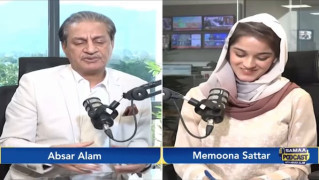RajaRawal111
Prime Minister (20k+ posts)

ISLAMABAD: Credible global financial institutions and reputed foreign media houses are in unison that Pakistans economy is continuously performing well and is the most underrated in the worlds emerging economies.According to these media houses that mainly focus on finance, investment, industry and marketing issues, the major factors of the economic boom and growth in Pakistan are the construction activity, strengthened private sector credit growth and Chinese-led investment in the name of China Pakistan Economic Corridor (CPEC).The Karachi Stock Exchange could easily be termed one of the best performers in the Asian Stock Market since 2013.
With a fast-improving security, a dynamic Pakistan has the potential to become a global turnaround success story as the countrys GDP growth accelerated to almost 5 percent, from an average of about 3 percent in the last five years.Just in the current week, two reputed media houses including Bloomberg has described Pakistans economys boost as a pleasant surprise for the world. According to an article published in Bloomberg on February 6, 2017, Gross-domestic-product growth has hovered in the range of 4 percent and now may be reaching 5 percent.
Thats not going to rival recent Chinese performance, but it is enough to put the economy on a fairly positive path. Since 2002, the rate of poverty has fallen by half, and over the past three years the rate of terrorist deaths has declined by two-thirds. Its now the case that 47 percent of Pakistani households own a washing machine, up from 13 percent in 1991, and retail is booming more generally.On February 7, 2017, Business Insider ranked worlds top 32 economies in 2030 and ranked Pakistan in top 20 world economies in next 13 years.
PricewaterhouseCoopers, one of the world's largest professional-services firms, just released its predictions for the most powerful economies in the world by 2030.The report, titled "The long view: how will the global economic order change by 2050?" ranked 32 countries by their projected global gross domestic product by purchasing power parity.Similarly, the Bloomberg in its report published on October 3, 2016 stated that even with limited progress on reforms, Pakistans gross domestic product growth accelerated to almost 5 percent, from an average of about 3 percent in the five years through 2013, supported by buoyant construction activity, strengthened private sector credit growth and Chinese-led investment, according to the IMF.
The rupee and Pakistans stocks have been among Asias best performers since 2013, boosted by the IMF program and MSCI Inc.s June announcement it would include the nations equities in its emerging-markets index.On February 10, 2016 World Bank President Jim Yong Kim visited Pakistan and during his stay he held meeting with the leadership of Pakistan including the prime minister. The World Bank president said that Pakistan is now on the path of increased economic growth and prosperity. Mr Kim applauded the prudent economic policies of Pakistan government, saying that the countrys economic outlook had become stable which was the result of the efforts of its financial team. He said Pakistan had an opportunity to become more ambitious in reforming its economy and reducing poverty in the country.
Similarly, the Economist in May 2015 reported that Pakistans economy was doing even better than the economies of Canada and the USA. It also said there was no corruption scandal at all in Nawaz Sharifs current tenure and that transparency was being ensured.Forbes.com, a renowned business magazine website in an article published on August 3, 2015 stressed that American policymakers and business leaders should be looking at Pakistan beyond the security lens.According to the article published in Forbes, The Pakistan of today is similar to that of Colombia in the late 1990s. Back then, words like drugs, gangs, and failed state were freely associated with the Andean country. Today, Colombia has a free trade agreement with the United States, a stable 3.5 percent annual GDP growth, and security is vastly improved.
Similarly, Western headlines on Pakistan today gloss over the progress on the security front, the increased political stability, and incremental progress on the economic front. In spite of this potential for Pakistan, it continues to suffer from a terrible country brand that has not caught up with realities on the ground.Bloomberg, in its report published on June 30, 2015 said that the construction boom had marked the nations emergence as a leading market after Prime Minister Nawaz Sharif had succeeded in averting a Balance-of-Payment crisis with help from the International Monetary Fund.He is boosting infrastructure spending as the $232 billion economy expands at the fastest pace since 2008 amid the cheapest borrowing costs in 42 years.
Shrugging off sectarian violence, bombings, killings and kidnappings, the benchmark KSE-100 stock index has advanced about 16 percent in the past 12 months, featuring among the worlds top 10 performers, the report had said.Meanwhile, in one of its earlier reports of June 12, 2015, Bloomberg revealed that Moodys Investors Service upgraded Pakistans sovereign credit ratings for the first time since 2008, making a strong mention of the soaring Forex reserves and the states economic overhauling under an IMF programme.The reputed London-based Economist, in its May 2, 2015 edition wrote that Pakistans economy was doing even better than economies of Canada and America.
The Economist contended: Pakistans economy is growing at over 4 percent when the whole Europe and Canada are below 3 percent. Terrorism incidents have dramatically gone down in the last year. Operations in Fata and Karachi and throughout Pakistan are producing fruit and the economic policies of Nawaz Sharif regime have put the economy back on track and economists and IMF are predicting that Pakistans economy would grow 4.7 percent next year.
According to the Economist, the key economic indicators in Pakistans economy include $17.7 billion Forex reserves, raised electricity tariffs and collection of some unpaid bills that have helped ease the cash burden on hard-pressed distribution companies, increase in tax receipts to broaden the base and cut exemptions, dispatch of over 150,000 tax notices to nonpayers, roping in more retailers into the indirect-tax net, bringing the budget deficit below 4 percent of GDP in 2015-16 from a peak of over 8 percent, an under-control inflation, creation of jobs in services sector, increase in sale of cement, lowering of interest rates twice this year only, a 22 percent upward trend in car sales, a projected saving a total of $12 billion in the next three years due to low oil prices and doubling of Pakistans stock market in dollar terms since the start of 2012 etc.
On December 20, 2016, Wall Street Journal published a story that how Pakistan is planning to overcome the energy crisis. According to this report, Pakistans economic growth has risen to almost 5 percent annually under Mr Sharif and his government set a 7 percent target for the years ahead. That, his government hopes, will boost the moribund private sector, reduce unemployment and provide youth with more alternatives to extremism.
https://www.thenews.com.pk/print/185085-Pak-economy-continues-performing-well-world-media-reports
Last edited by a moderator:
























